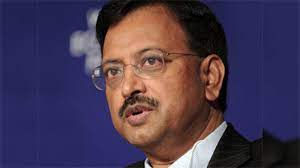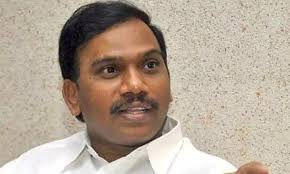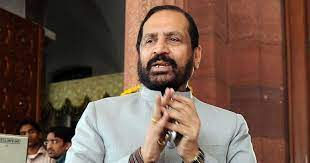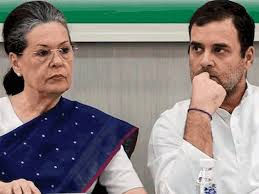White-Collar Whys: The Psychology Behind White-Collar Crime
- Uttara

- Aug 30, 2024
- 9 min read

White-collar crime, a term coined by criminologist Edwin Sutherland in 1939, refers to nonviolent crimes committed by business or government professionals, often involving deceit, breach of trust, or concealment rather than physical force. These crimes are typically perpetrated by individuals in the higher echelons of society, whose occupational roles provide them with ample opportunities for illicit gain. The psychology behind white-collar crime is complex and multifaceted, involving a blend of individual, situational, and systemic factors that drive seemingly respectable and affluent individuals to engage in such illicit activities.
Understanding White-Collar Crime
White-collar crimes differ significantly from traditional, street-level crimes. They require specialised knowledge and skills within various disciplines, such as management, finance, engineering, and information technology. These offences are often committed by individuals who use their inside knowledge to manipulate systems, exploit weaknesses, and take advantage of legal loopholes, frequently in ways that are challenging to detect and prosecute.
The impact of white-collar crimes extends far beyond immediate financial losses. They can erode trust in economic and political institutions, contribute to social inequality, and even destabilise financial markets. High-profile cases, such as the Enron scandal and the Bernie Madoff Ponzi scheme, illustrate the devastating ripple effects these crimes can have, affecting thousands of people and causing billions of dollars in damage.
Historical Context
The concept of white-collar crime has evolved over the years. Initially, it was associated with corporate executives and high-ranking government officials. However, with the advent of technology and globalisation, the scope of white-collar crime has expanded to include a broader range of professionals and activities. Today, white-collar crimes encompass a wide array of offences, including financial fraud, embezzlement, insider trading, and regulatory violations.
Types of White-Collar Crimes
Financial Fraud: This includes various forms of deceitful financial practices, such as Ponzi schemes, accounting fraud, and securities fraud. For instance, the Madoff Ponzi scheme, which lasted for decades, involved billions of dollars and affected thousands of investors worldwide.
Embezzlement: This involves the theft or misappropriation of funds by individuals in positions of trust. A notable example is the case of Bernard Ebbers, the former CEO of WorldCom, who was convicted of embezzling millions of dollars from the company.
Insider Trading: This involves using confidential information to gain an unfair advantage in financial markets. Martha Stewart's conviction for insider trading is a well-known example.
Regulatory Violations: These include offences such as tax evasion, environmental violations, and non-compliance with industry regulations. The Volkswagen emissions scandal is a recent example where the company manipulated emissions data to circumvent regulatory requirements.
Psychological Foundations of White-Collar Crime
The psychology of white-collar crime is rooted in several key factors:
Rationalisation: White-collar criminals often rationalise their actions, justifying them as necessary measures to achieve financial targets or sustain the performance of their companies. For instance, Steven Hoffenberg, who orchestrated a Ponzi scheme, emphasised how ethical considerations often take a back seat when financial goals must be met.
Manipulation of Trust: These individuals exploit the trust placed in them by their positions. They use their professional roles to deceive others, often creating complex schemes that are difficult to uncover. The manipulation of trust is a critical element, as it allows them to operate undetected for extended periods.
Financial Demands: The pressure to meet financial targets and the desire for personal gain are significant motivators. In environments where financial success is highly valued, individuals may feel compelled to engage in illicit activities to maintain their status or achieve their financial goals.
Personality Traits: Research suggests that certain personality traits, such as narcissism, psychopathy, and poor self-control, are more prevalent among white-collar criminals. These traits can lead individuals to overvalue immediate rewards and neglect the consequences of their actions. Neuro-criminological studies have shown that psychopaths tend to have an undersized amygdala and weaker connections between brain regions associated with decision-making and empathy, which can explain their lack of remorse and impulsive decision-making.
Case Studies: The Enron Scandal
The Enron scandal is a prime example of how psychological factors can lead to white-collar crime. The company's executives, including Jeffrey Skilling and Kenneth Lay, engaged in extensive accounting fraud to inflate the company's stock price. Their actions were driven by a combination of financial demands, rationalisation, and manipulation of trust. The company's culture, which emphasised aggressive financial targets and rewarded high-risk behaviour, also played a significant role in fostering an environment conducive to white-collar crime.

1. Harshad Mehta Securities Fraud (1988-1995)
Harshad Mehta, a stockbroker known as the "Sultan of Dalal Street," orchestrated one of the largest financial scams in Indian history. By exploiting loopholes in the banking system, he manipulated stock prices and created a false market for shares. Mehta misappropriated funds from banks, leading to a loss of approximately ₹5000 crores. His actions caused a significant crash in the Indian stock market, prompting regulatory reforms in the Securities and Exchange Board of India (SEBI) to prevent similar frauds in the future.

2. Satyam Scandal (2009)
The Satyam scandal is regarded as one of the most significant corporate accounting frauds in India. B. Ramalinga Raju, the founder of Satyam Computer Services, confessed to inflating the company's revenue and profits by manipulating financial statements. The scandal came to light when Raju admitted to overstating assets by ₹7,136 crores. This case highlighted the need for stricter corporate governance and transparency standards in India, leading to the implementation of the Companies Act, 2013, which aimed to enhance accountability in corporate practices.

3. 2G Spectrum Scam (2008)
The 2G spectrum scam involved the allocation of 2G telecom licenses at below-market prices, resulting in a loss of approximately ₹1.76 lakh crores to the Indian exchequer. The case implicated several high-ranking officials, including former Telecom Minister A. Raja, who was accused of favouring certain companies in the allocation process. The scam raised serious questions about corruption in the telecommunications sector and led to widespread public outrage, resulting in significant political ramifications and reforms in the allocation of spectrum and telecom licenses.

4. Commonwealth Games Scam (2010)
The Commonwealth Games scam revolved around allegations of corruption and financial mismanagement during the preparation for the 2010 Commonwealth Games held in Delhi. Reports indicated that inflated contracts and irregularities in the procurement process led to a loss of around ₹70,000 crores. Prominent figures, including former Organizing Committee Chairman Suresh Kalmadi, faced charges of corruption. The scandal underscored the need for greater transparency and accountability in public procurement processes in India.

5. AgustaWestland Chopper Scam (2012)
The AgustaWestland chopper scam involved allegations of bribery and corruption in the procurement of VVIP helicopters for the Indian government. It was revealed that middlemen paid substantial kickbacks to Indian officials to secure the deal, which was valued at approximately ₹3,600 crores. The case implicated several high-profile individuals, including former Air Chief Marshal S. P. Tyagi. The scandal highlighted the pervasive issue of corruption in defence procurement and led to calls for reforms in the defence acquisition process.

6. National Herald Case (2012)
The National Herald case involves allegations of financial impropriety against prominent political figures, including Sonia Gandhi and Rahul Gandhi. The case revolves around a loan taken by the Associated Journals Limited (AJL) from the Indian National Congress and the subsequent acquisition of AJL's assets by a company called Young Indian. The Enforcement Directorate has attached properties worth ₹64 crores in connection with this case, raising significant questions about political accountability and the intersection of business and politics in India.
The Fraud Triangle
The concept of the "Fraud Triangle" is particularly relevant in understanding the psychology of white-collar crime. This model identifies three major forces that influence white-collar crime: pressure, opportunity, and rationalisation. Pressure can stem from financial difficulties, personal problems, or the need to maintain a certain lifestyle. Opportunity arises from the individual's position and access to resources. Rationalisation involves the justification of the fraudulent behaviour, often by downplaying its severity or convincing oneself that it is necessary.
Pressure
Pressure is a critical component of the Fraud Triangle. It can manifest in various forms, including financial stress, personal crises, or the need to maintain a certain status. For instance, an executive facing financial difficulties may feel pressured to engage in fraudulent activities to meet their financial obligations. Similarly, an individual facing personal problems may rationalise their actions as a means to alleviate their stress.
Opportunity
Opportunity is another essential element. White-collar criminals often exploit their positions to gain access to resources and information that can be manipulated for illicit gain. This can include access to financial records, confidential information, or control over company assets. The opportunity to commit fraud is often facilitated by weak internal controls, lack of oversight, or a culture that tolerates unethical behaviour.
Rationalisation
Rationalisation is the final component of the Fraud Triangle. White-collar criminals frequently justify their actions by convincing themselves that they are necessary or that the ends justify the means. This rationalisation can take many forms, including downplaying the severity of the crime, blaming external circumstances, or convincing oneself that the behaviour is temporary and will be rectified in the future.
Environmental and Organisational Factors
The environment and organisational culture also play crucial roles in the perpetration of white-collar crimes. In companies where unethical behaviour is normalised or where there is a lack of strong ethical guidelines, individuals are more likely to engage in illicit activities. Corporate psychopaths in senior positions can influence the moral climate of entire organisations, altering the scope of what is perceived as acceptable behaviour.
Corporate Culture
The corporate culture can significantly impact the likelihood of white-collar crime. Companies that emphasise aggressive financial targets and reward high-risk behaviour may inadvertently foster an environment conducive to fraud. For example, the culture at Enron, which emphasised innovation and risk-taking, contributed to the widespread fraud that occurred within the company.
Leadership Influence
Leadership plays a critical role in shaping the organisational culture. Executives who model unethical behaviour can set a tone that encourages others to follow suit. This is often referred to as the "tone at the top." When leaders prioritise profits over ethics, it can create a culture where white-collar crime is more likely to occur.
Case Studies and Insights
High-profile cases offer valuable insights into the psychology of white-collar crime. For example, the downfall of executives once hailed as industry leaders, as described in "Insights From the Pinnacle: The Quest for America’s Finest Business Leaders," highlights the remarkable disconnect between their actions and ethical standards. Many of these executives showed little remorse for their actions and resorted to deceptive tactics to downplay their culpability during legal proceedings.
The Madoff Ponzi Scheme
The Bernie Madoff Ponzi scheme is another illustrative case. Madoff's ability to manipulate trust and exploit his position within the financial community allowed him to operate undetected for decades. His scheme involved promising unusually high returns to investors, which he achieved by using funds from new investors to pay earlier investors. This complex web of deceit was facilitated by Madoff's reputation and the trust placed in him by his clients.
Detection and Prevention
Detecting and preventing white-collar crimes is a challenging task due to their covert nature. Unlike traditional crimes, white-collar offences do not involve direct interaction with victims, creating a psychological distance that complicates the understanding of their actions. Journalists and whistleblowers often play a more proactive role in uncovering these crimes than standard law-enforcement agencies, which may lack the resources and time required to investigate such complex cases.
Internal Controls
Implementing strong internal controls is crucial in preventing white-collar crimes. This includes establishing robust accounting procedures, ensuring proper oversight, and fostering a culture of transparency and accountability. Companies should also invest in compliance programs that educate employees about ethical standards and the consequences of unethical behaviour.
Regulatory Measures
Regulatory measures are also essential in preventing white-collar crimes. Governments and regulatory bodies must establish and enforce stringent laws and regulations that deter fraudulent activities. This includes providing adequate resources for law enforcement agencies to investigate and prosecute white-collar crimes effectively.
Education and Awareness
Education and awareness programs are vital in preventing white-collar crimes. Business schools can play a significant role by integrating ethics and compliance into their curricula, helping to foster a culture of integrity among future business leaders. Companies should also provide ongoing training and education programs for their employees to ensure they understand the importance of ethical behaviour and the consequences of white-collar crime.
White-collar crime is a complex and multifaceted issue, driven by a combination of individual, situational, and systemic factors. Understanding the psychology behind these crimes is essential for developing effective preventive strategies and legal provisions. By recognising the role of rationalisation, manipulation of trust, financial demands, and personality traits, as well as the influence of environmental and organisational factors, we can better address the root causes of white-collar crime.
In conclusion, while white-collar crimes may not involve physical harm, their impact on society is profound. They erode trust, distort market competition, and contribute to social inequality. As we strive to create a safer and fairer society, it is imperative to delve deeper into the psychology of white-collar crime and to implement robust measures to prevent and detect these offences.
References
Sutherland, E. H. (1949). White collar crimes. New York: Dryden Press.
Benson, M. L., & Simpson, S. S. (2018). White-collar crime (3rd ed.). New York: Routledge.
Goldstraw-White, J. (2012). White-collar crime. London: Palgrave Macmillan UK.
Geis, G., Meier, R., & Salinger, L. (Eds.). (1995). White-collar crime: Classic & contemporary views. New York: Free Press.
Green, S. P. (2006). Lying, cheating, and stealing: A moral theory of white collar crime. Oxford: Oxford University Press.
Koller, C. A. (2012). White collar crime in housing: Mortgage fraud in the United States. El Paso, TX: LFB Scholarly.
Leap, T. L. (2007). Dishonest dollars: The dynamics of white-collar crime. Ithaca: Cornell University Press.
Newman, G. R., & Clarke, R. V. (2003). Superhighway robbery: Preventing e-commerce crime. Portland, OR: Willan Publishing.
© [2024] ClueChronicles. All rights reserved. No part of this article may be reproduced, distributed, or transmitted in any form or by any means, including photocopying, recording, or other electronic or mechanical methods, without the prior written permission of the publisher, except in the case of brief quotations embodied in critical reviews and certain other noncommercial uses permitted by copyright law. For permission requests, please contact the author.
Disclaimer: Use of Google Images
This blog contains images sourced from Google Images. We do not claim ownership of these images and make no guarantees regarding their copyright status. If you are the copyright owner of any image and wish for it to be removed or properly attributed, please contact us at cluechronicles@gmail.com, and we will address your request promptly. We strive to respect intellectual property rights and encourage the use of properly licensed images whenever possible. Thank you for your understanding.






Comments